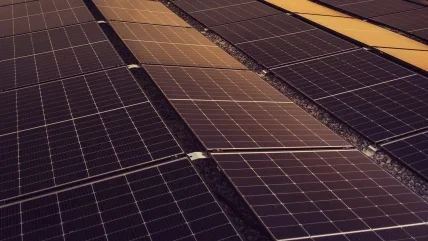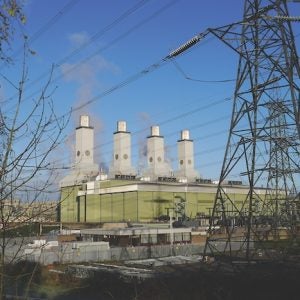
When we set up our Zero Emission Hydrogen Turbine Center (ZEHTC) just over three years ago, our main research goals were to gain more expertise on the added value of hydrogen gas turbines and energy storage for a sustainable energy system. We also wanted to expand our hydrogen testing resources to improve the hydrogen capability of our gas turbines and “capture” some of the excess electricity generated during on-site testing of our gas turbines to produce hydrogen. By using this hydrogen for new testing, we were able showcase a very smart circular system for reducing our CO2 emissions on-site. Working with our partner universities, we’ve built valuable knowledge about how we can design future energy systems and what the role of hydrogen will be.
Learning number 1: hydrogen reduces average electricity costs in decarbonised energy systems
Future energy systems will consist of many different “pieces of the jigsaw puzzle.” Hydrogen used to run gas turbines is one piece of the puzzle that will make surplus electricity a key factor in future energy systems. At present, if wind and solar power plants produce more electricity than needed, the first step is to reduce power production from fossil power generation facilities like coal, oil, and natural gas power plants. However, as more renewable energy enters the system, energy storage and dispatchable power become more important. To understand the value of hydrogen gas turbines for the system, we need to compare the cost of a future decarbonised power system both with and without hydrogen storage coupled to re-generation capacity. This system modeling was done by Chalmers University of Technology as part of the ZEHTC project. The project concluded that time-shifting electricity generation using hydrogen adds value to the European energy system by reducing average electricity costs by up to 15% (strongly depending on the region), because over-dimensioning of all other equipment was shown to be more expensive than including hydrogen storage and re-generation capacity. Siemens Energy’s modelling shows similar results, for both Europe and other regions. These research results clearly demonstrate that the storage of hydrogen and re-conversion to electricity makes economic sense in future energy systems.
One decisive advantage is that the hydrogen gas-turbine power plants won’t have to be built from scratch: many existing plants can be converted to use hydrogen with a manageable effort.
Learning number 2: hydrogen gas turbines provide plannable electricity in wind-dominated power systems
Wind and solar power plants are fluctuating sources of electricity generation. However, they differ greatly in the way they fluctuate – and that’s an important factor when considering them for future power systems. Photovoltaic systems depend on solar radiation, so they only produce electricity during the day. Conditions can change from sun to cloud and vice versa several times a day and for just a few minutes. Wind, on the other hand, fluctuates much less strongly and frequently.
We have therefore calculated that hydrogen gas turbines are a good solution for balancing renewables in wind-dominated power systems. In contrast, battery storage plays a major role in solar-dominated power systems, where fluctuations are shorter and more frequent. In the solar-dominated system, with energy storage, hydrogen gas turbines can assume more of a back-up role with fewer operating hours. In addition, in a decarbonised energy system based on wind and solar power, demand-side behaviour also has an important impact. The load on the grid, for example, can be relieved through the intelligent charging of electric vehicles and the flexible operation of electrolysers and heat pumps.
In a real world net-zero power system, both short-term (for example, battery) and long-term (for example, hydrogen) storage need to work side by side.
Learning number 3: hydrogen-based power plants can be critical for ensuring electrical grid stability
In future energy systems, hydrogen-fuelled gas-turbine power plants will start up whenever wind and solar power plants can’t meet current electricity demand by using hydrogen previously produced from surplus electricity. Because the load-cycling capabilities of modern gas turbines are extremely good, they can make a significant contribution to grid stability and security of supply. The ZEHTC project estimates that gas turbines in net-zero electricity systems will perform about 100 starts per year and operate about 2000 hours per year. Even though those numbers sound low, gas-turbine power plants will be essential in the net-zero electricity system due to their flexible peaking and back-up power capabilities – and because gas turbines are well-suited for providing grid services like spinning reserve, inertia, and reactive power when needed. This makes hydrogen gas turbines an appropriate technology for densely populated areas.
The prediction is that combined cycle, cogeneration, and simple cycle installations will be needed. Today many gas turbines are installed in cogeneration combined cycle power plants, where the heat generated from the gas turbine is used in a heat recovery steam generator that produces additional electricity in a steam turbine, and the residual heat from the gas turbines is utilised to generate district or process heat. Those installations are delivering an overall efficiency of above 90%, and in energy systems where heat is needed, they’ll also be essential in the future. However, open cycle gas turbines will be vital in the future energy system too, and their numbers may increase, mainly in applications with few operational hours and to provide back-up power and grid services.
Learning number 4: liquid green fuels are a valuable complement to hydrogen
Hydrogen produced from renewable power sources will provide dispatchable green power and will be central to decarbonised energy systems. Surplus electricity can be converted into hydrogen by an electrolyser. For example, if wind power surpluses occur in the northern part of a country, the hydrogen produced can be transported to the wind-poor south and stored there to be reconverted to power later using hydrogen gas turbines. However, when the hydrogen isn’t produced close to where it’s used, it needs to be transported – for example, in a pipeline network. Or, because hydrogen is voluminous, it can be converted into a liquid that’s easier to both transport and store.
Liquid biofuels are an important alternative for locations that can’t be connected to a pipeline network.
Possible energy carriers could be ammonia (by mixing hydrogen with nitrogen), or methanol (mixing it with CO2). When hydrogen is converted to a liquid fuel, it’s easier to store for longer periods. Liquid green fuels, employed in gas turbine power plants, are appropriate for time-shifting electricity production to match demand. Other economic advantages may be derived from flexibly blending hydrogen with biofuels.
This will strengthen the competitiveness of power plants by allowing the gas turbines to operate using different fuel mixes depending on the availability and pricing of different fuels: for example, during periods when hydrogen is expensive.
How we’ll move forward
It remains a major challenge for all of us to achieve the CO2 reduction targets set in the Paris Agreement. At Finspang and in Siemens Energy as a whole, we’ll make an important contribution to progress by continuing to focus on developing and manufacturing gas turbines that can run on hydrogen and other low-carbon fuels.
The ZEHTC project has now come to an end and the consortium is dissolved but the demonstrator plant will continue to operate. In the near future, Siemens Energy will be expanding the hydrogen storage capacity to provide sufficient hydrogen for our own R&D activities, which include conducting gas turbine tests using 100% hydrogen. The technology for running gas turbines on gas with a high hydrogen content is already available today when you either invest in a new gas turbine or retrofit an existing one. Targetting 2025, Siemens Energy intends to offer mid-sized gas turbines with dry-low emission (DLE) technology that can run on 100% hydrogen.
It’s also important to mention that more and more full-scale projects are being planned and launched. Just recently, the German utility EnBW announced a new pilot project with Siemens Energy for H2-ready gas turbine delivery. The EnBW Stuttgart-Munster plant in Germany will have two 62 MW SGT-800 gas turbines that can handle up to 75% hydrogen admixture on delivery in 2024. The project includes a maintenance contract to upgrade the gas turbines to run on 100% hydrogen when sufficient hydrogen is availalable.
It’s not possible to reliably forecast when green hydrogen will be available in sufficient quantities and at affordable prices. Future innovations in hydrogen production and transportation will have a major impact on when we can create a net-zero energy system.
However, we’ll do everything we can to develop and offer economic hydrogen solutions in order to give the hydrogen economy a strong boost as an important part of the energy transition.
A net zero electricity system
* Based on historical weather data and hourly load demand for Germany
* Optimised for a stable 100% renewable electricity system for a city of 250 000 inhabitants, including industry
* Based on 2022 values for system levelised cost of electricity (LCOE), gas price and CAPEX
ZEHTC partners and funding
Partners: University of Bologna, Italy; Chalmers University of Technology, Sweden; County Administrative Board of Östergötland, Sweden; Finspång Municipality Administrative Authority, Sweden; Siemens Energy AB; Linde Gas AB
Funding: The project has received funding via the EU ERA-Net Smart Energy Systems initiative, with support from the European Union’s Horizon 2020 research and innovation programme under grant agreement No. 775970
Websites: zehtc.org; siemens-energy.com/zehtc
Author: Asa Lyckstrom, sustainability strategist, Siemens Energy, Finspang, Sweden






